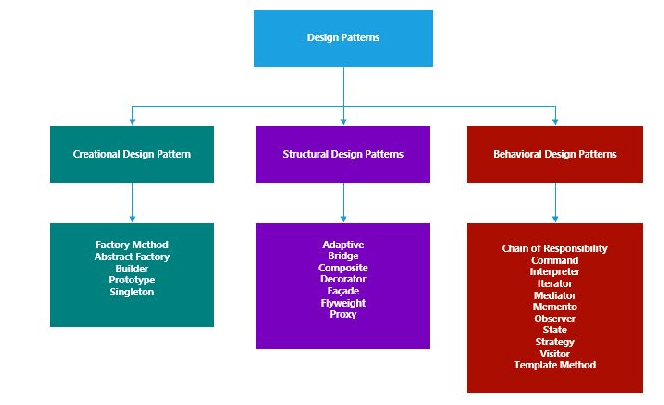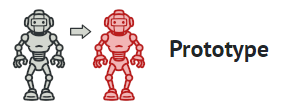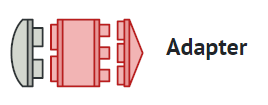asp net design patterns video tutorial
Design Patterns C#
In this article, we would be discussing various Design Patterns in C# using different subcategories enshrined in them. We would be starting by gaining absolute knowledge from scratch and how different types of Design Patterns play different roles in solving various problems. Let's get started.
What are Design Patterns?
We often get stuck at loopholes of some specific problems that cannot find our way around. We also fail to realize what exactly can make a sample piece of code more efficient in terms of speed and agility. These problems are highly generic while developing applications in C# because of their dynamic and complex nature. That's where Design patterns play a major role in identifying gaps and opportunities to resolve this kind of issue.
Design Patterns however are general solution providers or they can be termed as flexible solution makers for commonly arising design pattern problems. In the world of Object-Oriented Programming, it is a provider of a reusable solution that usually occurs regularly in application development. Design Pattern provides a template or descriptional approach on how to solve a problem arising in multiple situations.
Importance of Design Patterns
Each design pattern in C# or any other hardcore programming languages portrays a special problem that shoots out over and over again in a specific environment and the solution to these problems in identifying the agility, simplicity, and complexity in generating an optimal solution that solves millions of problems with just one solution is what the purpose of Design Pattern's existence. To be precise, it is a pattern language to all such problems.
To be specific about patterns, the choice of opting for a certain pattern in C# is not confined to solving only a single problem. Patterns are so efficient that they can solve millions of problems with just a few lines of code. Also, an approach to opt for a design pattern depends on the sole nature of the problem as well as the individual needs. Moreover, almost all the developers are well aware of Design Patterns. They know how powerful this tool is. It is therefore very crucial to understand that design patterns cannot be mugged up by memorizing properties, methods, and classes rather it is important to develop a healthy approach to implement these patterns' ineffective usage to get desired results. It is also important to realize the implementation of certain methods to a certain type of problem and the continuous practice would involve addressing the best-suited design.
There are although plenty of design patterns in C# approximately 23 which are also known as Gang of Four. Since we have understood how important these patterns are, let us proceed to discover these patterns in an absolute structured manner. Consider the below images:

Creational Design Patterns
Creational Design Patterns offer an effective and dynamically powered mechanism that channels the proximity of code reusability and enhances flexibility so that problems can be solved in a wider arena. The wider the arena the more visible it is to find it and solve it. Creational Design Patterns involve various sub-categories that have been interestingly discussed below.

Factory Method is mainly used to provide creational objects in the sub-class and these sub-classes are allowed to alter the type of the objects that would be created.

Abstract factory pattern let us produce families of multiple related objects without specifying which classes they belong. They remain totally under the hood.

Builder pattern will let us produce families of multiple related objects without specifying which classes they belong to. They remain totally under the hood.

Prototype design pattern will let us copy the existing objects while implementing them without having to be dependent completely on the classes defined.

As the name suggests, this pattern ensures that a class should have only one instance with the condition of providing a global access point to the instance.
Structural Design Patterns
Structural Design Patterns offer the flexibility of constructing objects and classes in a large structure so that they can be deal with larger problems arising at a certain instance. This design pattern ensures that all the objects and classes are assembled to form a large structure without hampering the efficiency and keeping the flexibility on point. It consists of various sub-categories as shown below.

This allows collaboration with all the interfaces that are found incompatible with the solution-based approach.

It allows to split a large class or set into several small fragments or closely related classes based on the hierarchies. It can be called an abstractional implementation where these small classes are rationally and independently dealt with.

The composite structure allows us to deal with the objects by composing them in the form of the tree structure and splitting out the nodes and treating them as individual objects to drive a solution-based mechanism.

The decorator enables to attach various new behaviors to the objects. It does so by covering up these objects in special wrapper objects followed by the behavior contained in them.

The facade offers a simple interface and exposure to the library or a framework by managing to portray the effective solutions with the enhancement in the interface no matter what framework we are using.

Flyweight allows us to fit more objects into the RAM. This is done by sharing a common part of the state that is found between multiple objects rather than having to have to store all the data for each object.

It provides a different way or a substitute for another object. It offers a placeholder for the proxy that controls the access of the original objects. The requests are therefore processed either before or after the original object gets allowed.
Behavioral Design Patterns
Behavioral Design Patterns are strictly confined to strategic or algorithmic approaches. This pattern is mainly concerned with the approach of sharing or putting responsibilities between different objects. This pattern can be categorized into various sub-categories as shown below.

It passes the requests to the chain of handlers. When the request is received by these handlers in any event, these handlers decide whether they should be passed to the request to another handler in the chain or process the currently received request.

It turns the requests into standalone objects and these objects contain all the data of the request being taken into consideration. Later this request is passed as a method argument for processing and supporting operations which are undoable or queued.

This will let you iterate over the collection or list of problematic patterns without having to expose the underlying representation.

It simply reduces the dependencies causing chaos by stopping direct communication between the objects and in turn forces them to collaborate via a mediator object.

It simply hides the implementation details of the object and maintains the actions like saving and restoring the previous state.

It helps to define a mechanism for a subscription that eventually notifies the objects about any events that may occur when they are out on the observation.

It allows to change the whole state of the object there exist some internal changes in the state. It might appear like an object that has changed its class.

It allows us to interchange the objects by putting them into different classes through a native family of algorithms.

It enables overriding of the subclass over some predefined phases of an algorithm without having to alter the superclass defying the skeleton of the proposed algorithm.

It simply separates the objects which operate on the algorithm assigned to it.
Summary
Design patterns play a crucial role in determining the solutions to those problems that require ultimate efficiency and progress at each step. They are not just confined to solve issues related to a certain level of the problem occurring at regular intervals, but also help the developers in thinking like a computer and how to approach a problem.
In this tutorial, we saw how dynamic these patterns are and to extend they can be implemented depending on the scenarios. We also got a clear idea of what exactly the patterns are leaned out different subcategories of the discussed three patterns. However, there's another catch where things turn fetal for developers and design patterns come to the rescue. Therefore, it can be concluded in a shorter sentence that design patterns are smart and efficient code snippets that are reusable for millions of commonly arising issues in C#. Developers who are hooked to C# are always aware of the importance of design patterns with C# being a dynamic programming language that needs the massive support of these solution-based patterns to cope with day-to-day issues.
asp net design patterns video tutorial
Source: https://www.javatpoint.com/design-patterns-c-sharp
Posted by: petreecoulth56.blogspot.com

0 Response to "asp net design patterns video tutorial"
Post a Comment